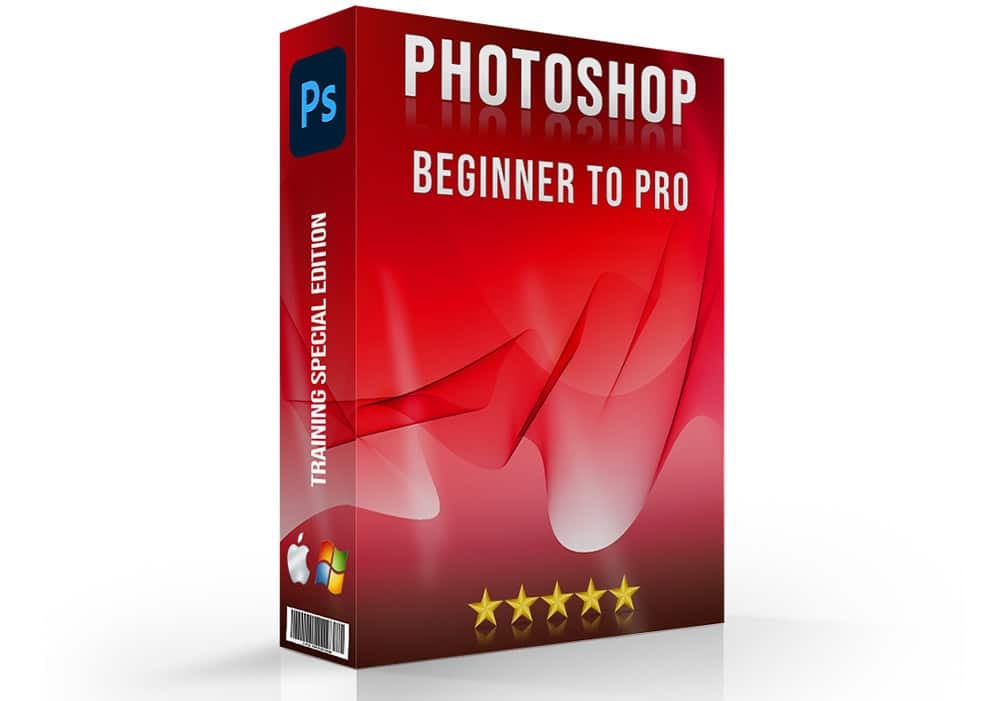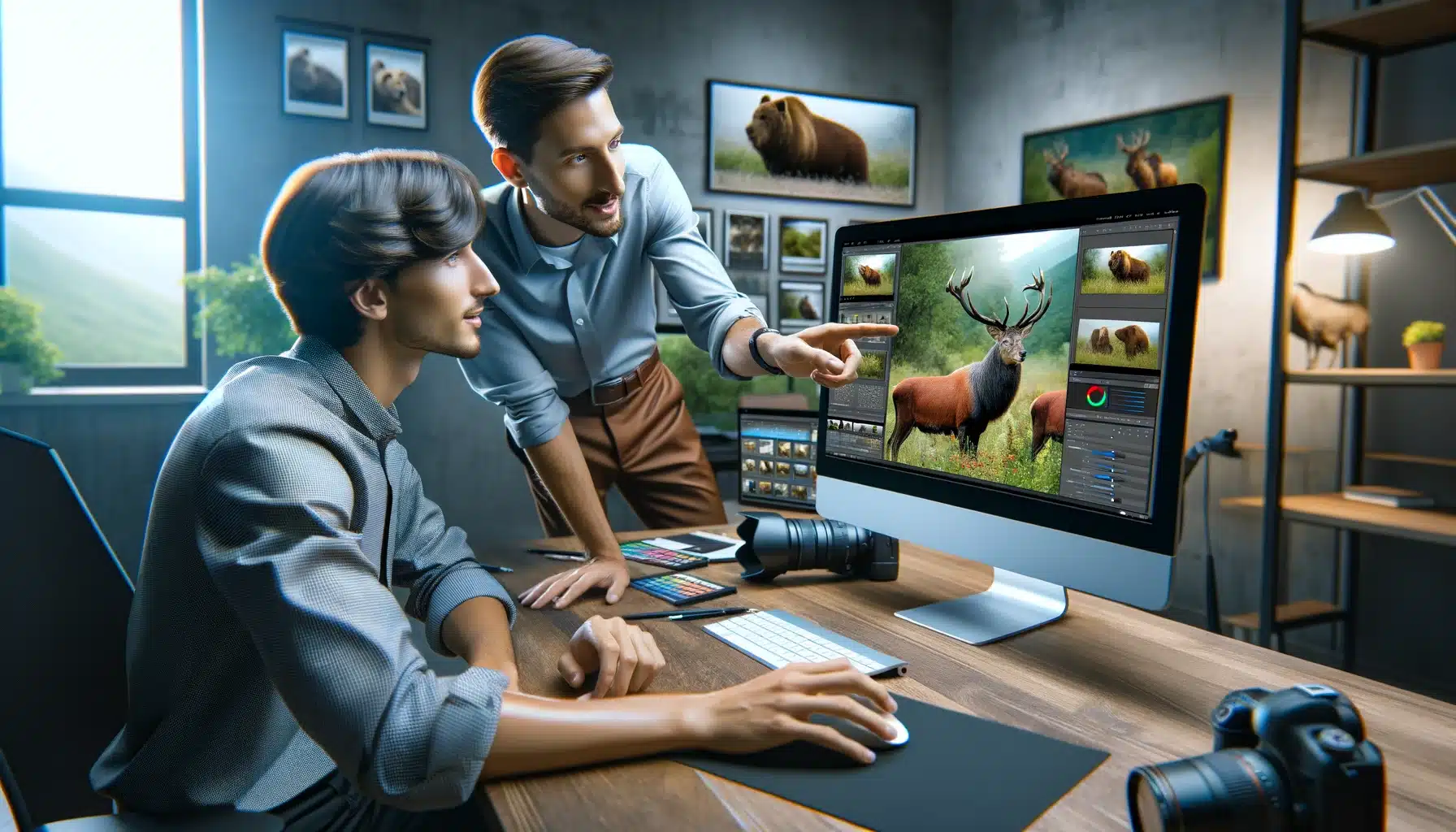
Introduction to How to Edit Wildlife Photos
Embarking on the journey of wildlife photography modification is like unlocking a treasure chest of visual wonders. How to edit wildlife photos is not just about tweaking settings in Photoshop or Lightroom; it’s about breathing life into your images, making each creature leap off the screen and into the viewer’s heart.
This article guide will illuminate the path to transforming good wildlife shots into mesmerizing masterpieces. With the right modification techniques, your wildlife photos can capture the raw essence of nature. It showcases the intricate details, vibrant colors, and dynamic expressions of the animal kingdom.
Let’s dive into the art of wildlife photo modification, where every adjustment opens up new possibilities to enhance the natural beauty captured through your lens.
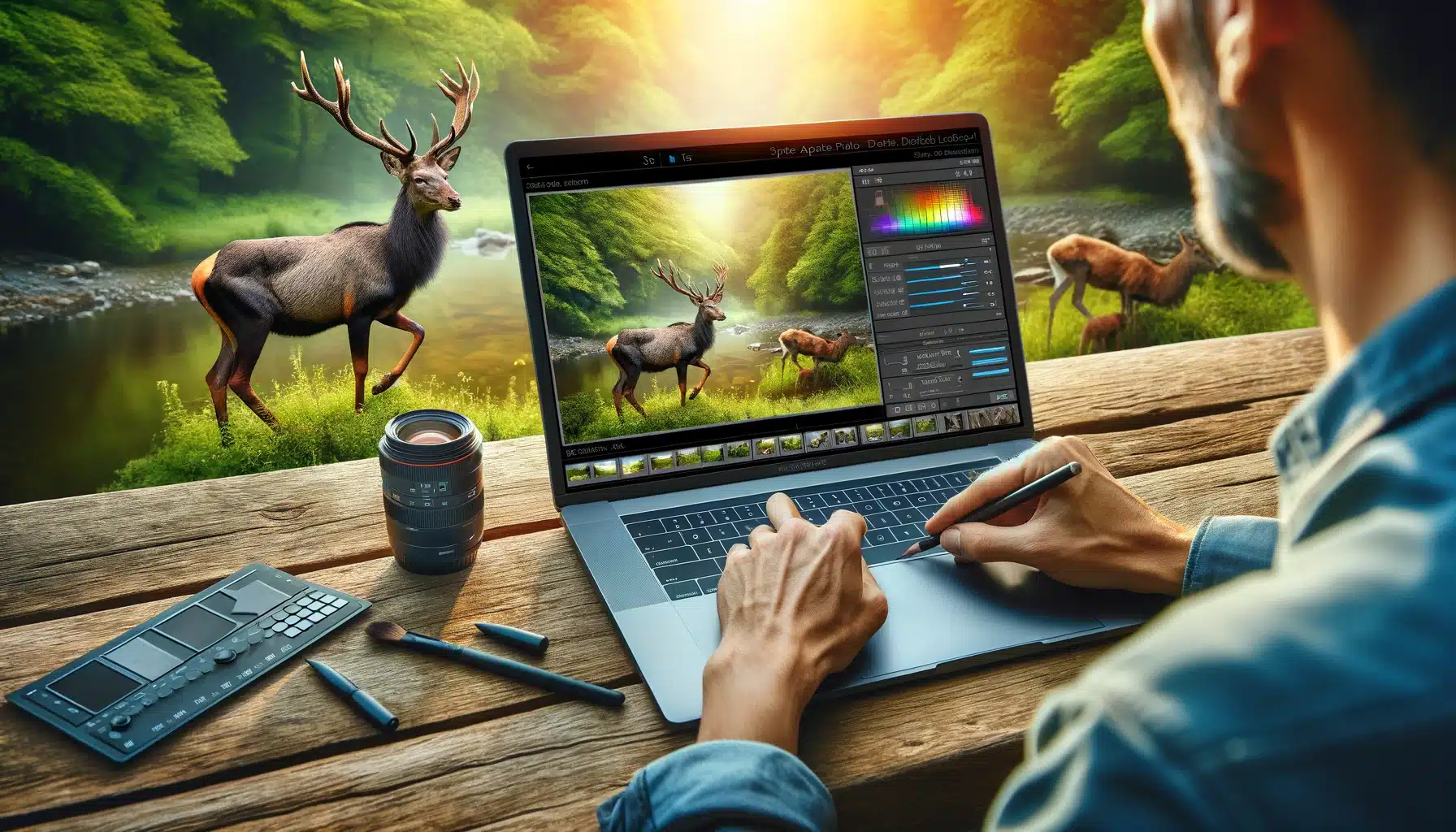
Table of Contents
Essential Tools for Modifying Wildlife Photos
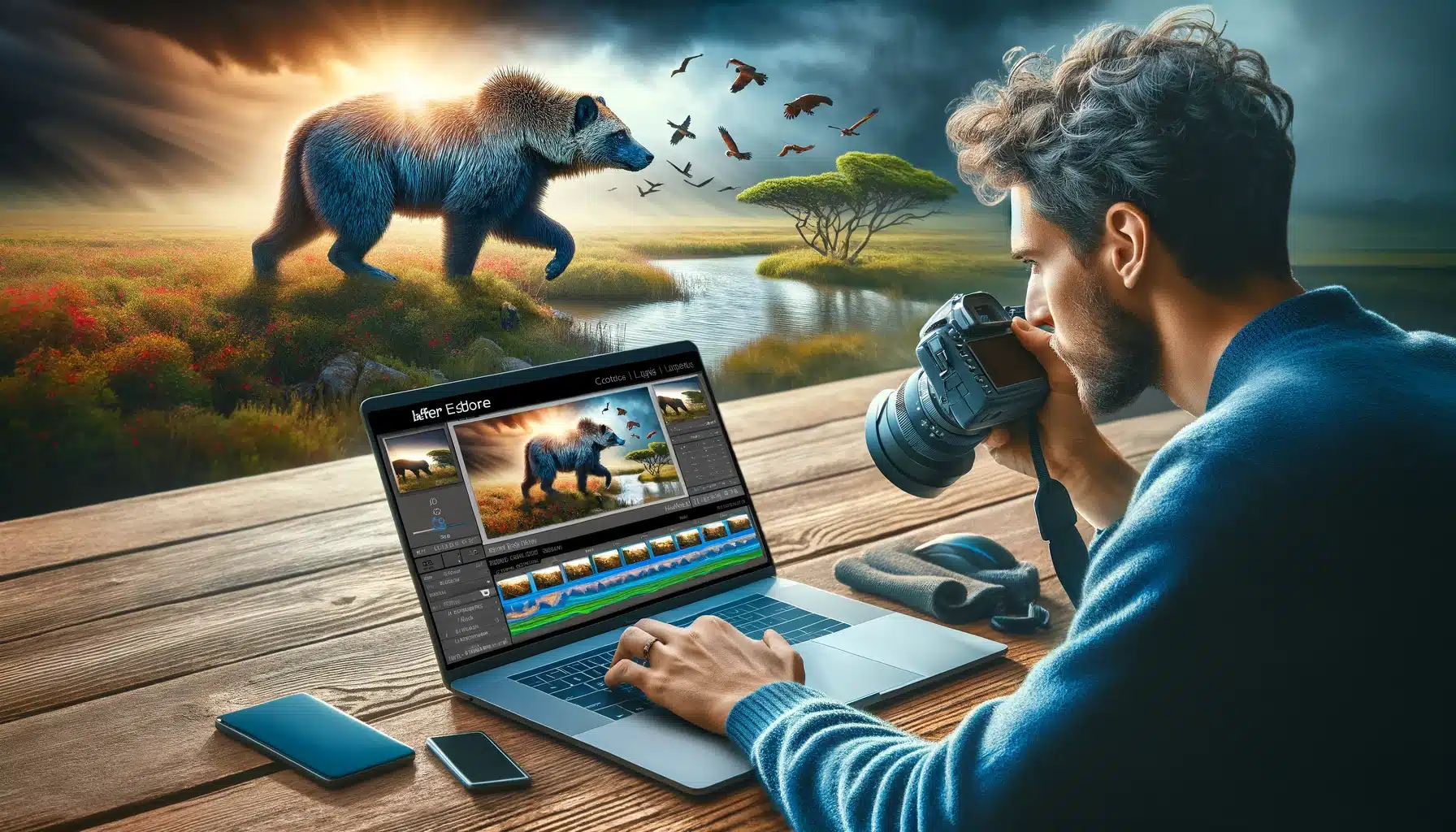
Choosing Your Software
To uncover the secrets of how to edit wildlife photos, you first need the right modifying software. Programs like Adobe Photoshop and Lightroom are indispensable, acting as your digital darkroom. They offer a wide array of utlities that allow for everything from basic tweaks to comprehensive edits. It makes them foundational for anyone looking to enhance their animal photography.
Leveraging Graphics Tablets for Precision
With the right software in hand, the next step in how to edit wildlife photos is to employ a graphics tablet. This utility brings a level of precision and control unmatched by a mouse alone. Whether you’re refining the sharpness of an eagle’s eye or softening the background to make a leopard stand out, a graphics tablet can make the task both easier and more effective.
Mastering How To Edit Wildlife Photos
Integrating Wildlife Photography editing Techniques into your workflow is essential for bringing out the quality in your photographs. This involves not just adjusting brightness, but also delving into more nuanced edits. Edits like color grading and shadow lifting are its part. These techniques allow you to convey the mood and atmosphere of the wildlife scene. Hence you can capture the essence and emotion of the moment.
Understanding Wildlife Photography Basics
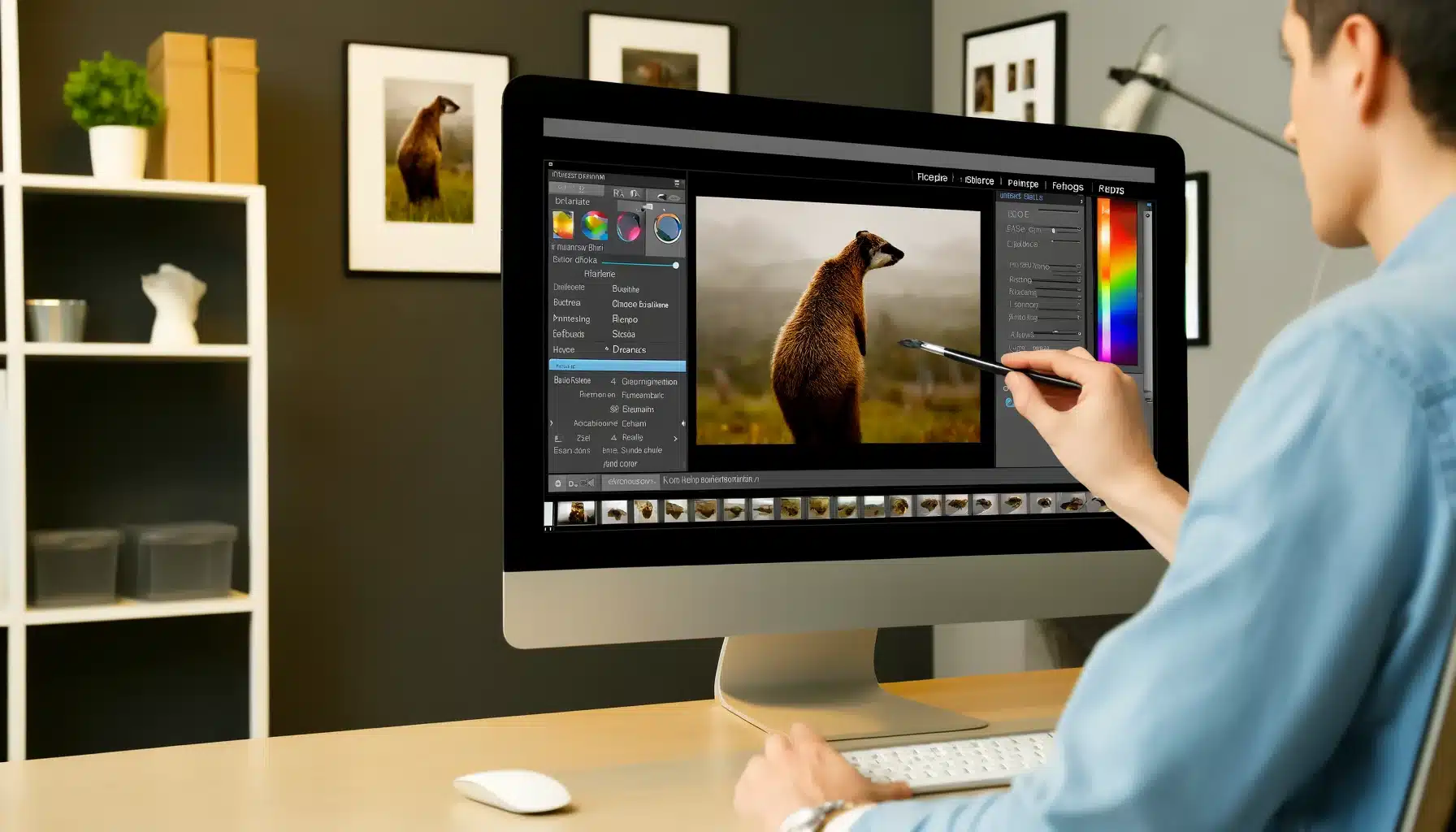
Composition and Lighting Mastery
- Framing Animals Shots: Composition plays a significant role in wildlife photography. The rule of thirds helps create balanced and engaging photographs. Natural elements like vegetation and landscapes can frame the subject within the shot, adding depth and context.
- Mastering Light in Nature: Understanding and utilizing natural light can dramatically enhance the quality of animals pictures. Shooting during the golden hours, shortly after sunrise or before sunset. It offers soft, warm lighting that highlights textures and colours, while overcast conditions provide diffused light, reducing harsh shadows and highlights.
Essential Techniques Before Modification
- Pre-Edit Considerations: Achieving the best possible image in-camera reduces the need for extensive post-processing. Photographers should strive to understand the natural environment. It aids in capturing more authentic and compelling wildlife images. Understanding the behavior and habitat of the subject can also greatly enhance the quality of the captured image.
- Importance of Getting It Right In-Camera: The in-camera technique is pivotal in wildlife photography. A well-composed shot with the correct exposure and focus minimizes the need for correction during emending. Thus it preserves the photo's quality and authenticity. It's essential to master the art of capturing sharp images with good lighting, as this forms the foundation for any subsequent emending work.
Advanced Techniques
- Creative Post-Processing Tips for Nature Shots: Selective adaptations in post-processing can draw attention to the subject or create a compelling focal point in the image. Colour grading is another powerful application that can be used to evoke specific moods and complement the natural setting of the animal kingdom.
- Camera Settings for Wildlife: Optimal camera settings are pivotal. Fast shutter speeds are essential for freezing motion and avoiding blurs in fast-moving scenes. Aperture adaptations can help control the depth of field, isolating the subject from the background and drawing the viewer’s focus. Elective adaptations in post-processing can draw attention to the subject or create a compelling focal point in the image.
Mastering Editing of Wildlife Photos in Lightroom
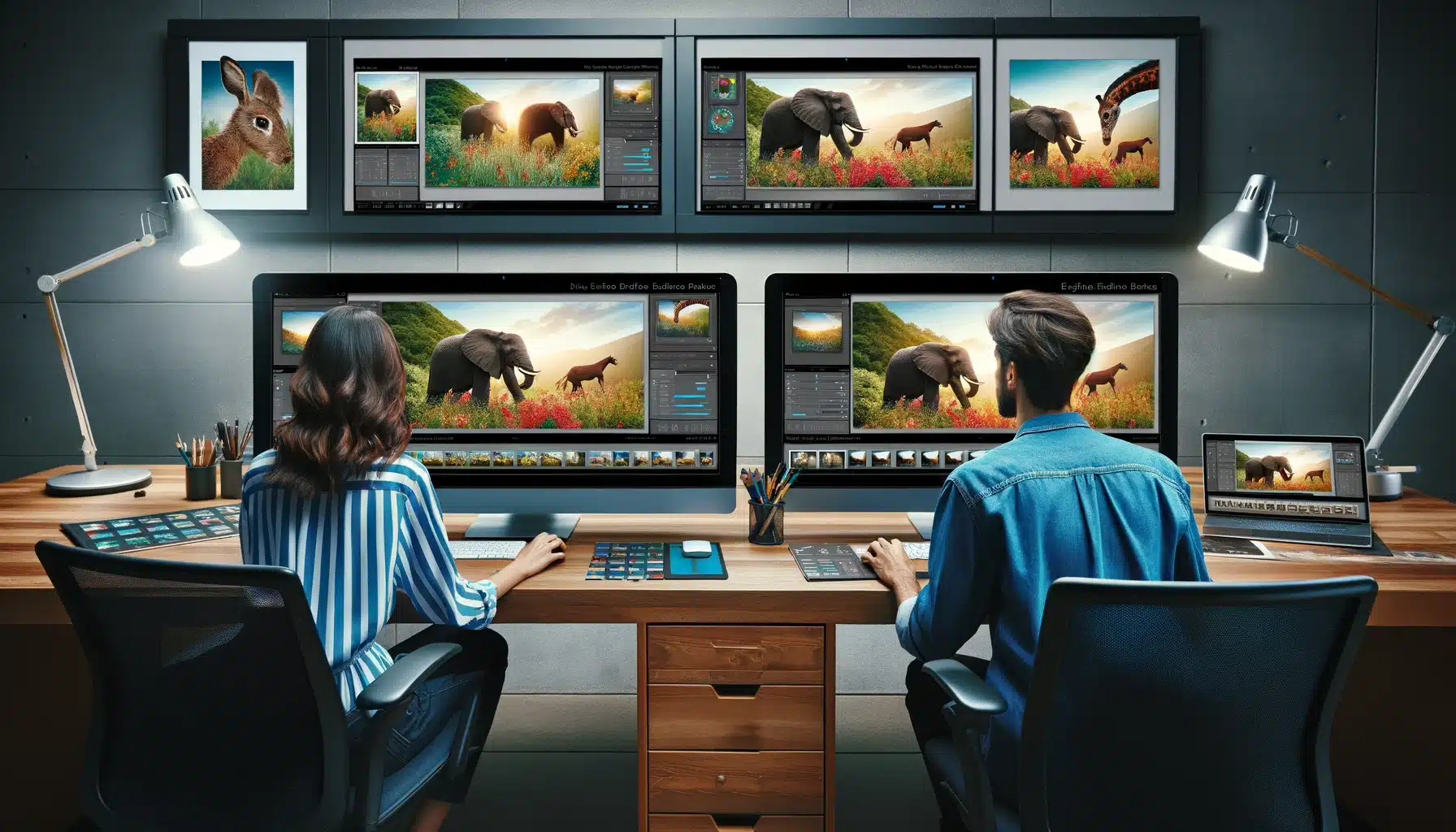
Getting Started with Lightroom
Lightroom is a powerful program for your query like how to edit wildlife photos. It offers an intuitive interface and comprehensive features tailored for enhancing wildlife images. As you begin your journey in LR, get familiarized with its library and develop modules. These are essential in organizing and emending your wildlife photos in Lightroom.
Primary Adaptations for Impact
- Display and image contrast: Adjusting display and image contrast is the first step in how to edit wildlife photos in Lightroom. These primary adaptations can significantly improve the visibility and detail of your photographs, making them more vibrant and lively. With wildlife photos in Lightroom, you can easily tweak these settings to highlight the natural beauty of the animals.
Advanced Post-Processing Tips for Nature Shots Editing in Lightroom
- Appearance: To bring out the intricate details in wildlife photos in Lightroom, utilize the sharpening and noise reduction features. Enhancing the texture and clarity of the pictures can make the fur, feathers, and eyes of wildlife stand out. It adds depth and realism to your pictures.
- Selective Modification: LR offers selective emending utilities like the adjustment brush, graduated filter, and radial filter. These features are invaluable for making localized adjustments in your wildlife photos in Lightroom. They allow you to draw attention to the subject, enhance the background, or create dynamic lighting effects.
| LR Feature | Purpose for Modifying Wildlife Photos |
|---|---|
| White Balance Selector | Adjusts colour temperature to make wildlife photos look natural and true to the scene. |
| Tone Curve | Provides precise control over shadows, midtones, and highlights, allowing for detailed tonal refinements in fur and feathers. |
| HSL/Color Panel | Enables selective color alternation to make specific elements in wildlife photos, like animal coats or environment, stand out. |
| Detail Panel | Sharpens the image and reduces noise, crucial for enhancing the clarity and texture in animals shots, particularly in low light conditions. |
| Lens Correction | Correct lens distortion, and is important for ensuring that wildlife pictures have accurate representations of the scene and subjects. |
| Transform Tool | Adjusts perspective and alignment, which can be particularly useful for correcting angles in wildlife photography, ensuring a natural look. |
| Brush Adjustment | Allows for precise, localized edits such as brightening eyes, and enhancing details in feathers or fur. |
| Graduated Filter | Applies smooth, gradual transitions to elements like skies or backgrounds. |
| Radial Filter | Draws focus on the main subject, like an animal, by applying selective adjustments in a circular or elliptical shape around it. |
| Spot Removal | Removes unwanted spots or distractions in the background, keeping the focus on the wildlife subject. |
Advanced Techniques for Editing Wildlife Photos in Photoshop
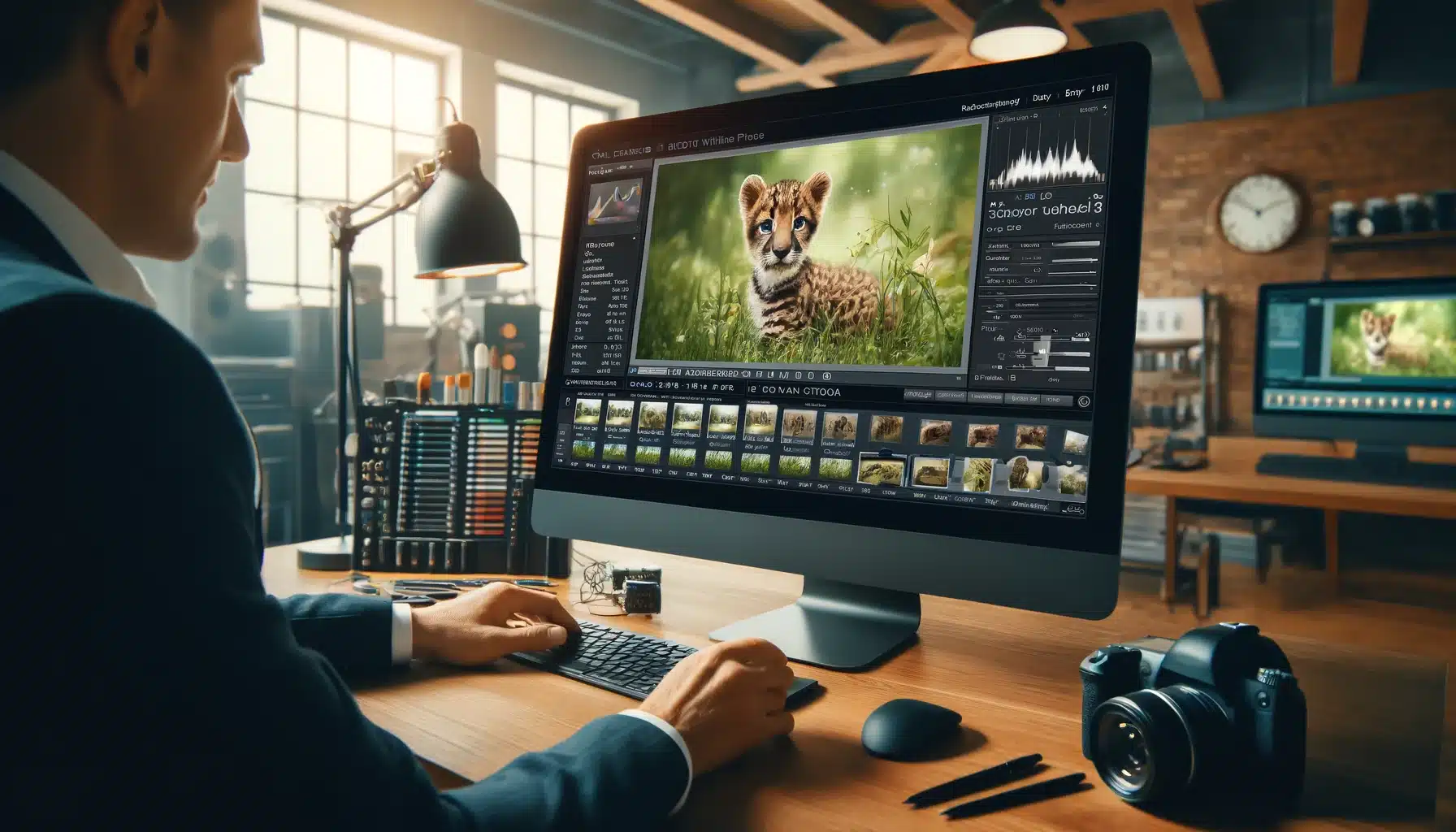
1. Unleashing the Tool's Power
This program offers a suite of advanced features that go beyond the basic modifications found in LR. It provides a broader canvas for creativity in modifying wildlife snapshots. This nature photo editing guide will delve into the sophisticated techniques used for modifying wildlife photos in Photoshop. You can join our courses and learn how to edit wildlife photos in no time.
2. Precision modification with Layers and Masks
Layered Adjustments: One of the Recommended Wildlife Photography Editing Techniques
Using layers allows for non-destructive modification of wildlife photos. It means you can tweak and revert changes without affecting the original image. This feature is crucial for complex edits where multiple alternations need to be applied and reviewed.
How to Edit Wildlife Photos with Masking
Masking is a powerful feature that enables selective modification of parts of an image. To modify wildlife photos in Photoshop, you can use masks to edit only the subject or certain aspects of the background. It enhances the focus and composition without altering the entire image.
3. Advanced Retouching Tools
Spot Healing and Clone Stamp
For wildlife photos in Photoshop, removing distractions like unwanted objects or blemishes is essential. The Spot Healing Brush and Clone Stamp utilities are perfect for this, allowing for precise retouching that maintains the natural look of the wildlife setting. This is the noticeable feature to the question of how to edit wildlife photos.
Enhancing Wildlife Images with Content-Aware Fill
This feature is particularly useful in wildlife photos in Photoshop for filling in or removing larger areas seamlessly. It analyzes the surrounding area and fills the selected part with a matching pattern, texture and shade. This is ideal for blending in natural backgrounds or eliminating unwanted elements.
4. Dynamic Range and Colour Manipulation
HDR Toning
You do not need to worry about how to edit wildlife photos. The HDR toning and blending modes offer enhanced control over the dynamic range. It allows for the creation of snapshots with rich details in both shadows and highlights—a common requirement in wildlife photography where lighting conditions can be challenging.
| PS Feature | Benefits of Modification of Wildlife Photos |
|---|---|
| Depth of Field Blending | Creates photographs with extended sharpness through combined focus points. |
| Luminosity Masks | Enables targeted adaptations based on image brightness for precise emendation. |
| Advanced Channel Mixer | Allows nuanced color control, enhancing or converting wildlife images. |
| Focus Stacking | Produces sharp snaps with combined focus points for detailed clarity. |
| HDR Processing | Balances exposure across multiple shots for optimal lighting and detail. |
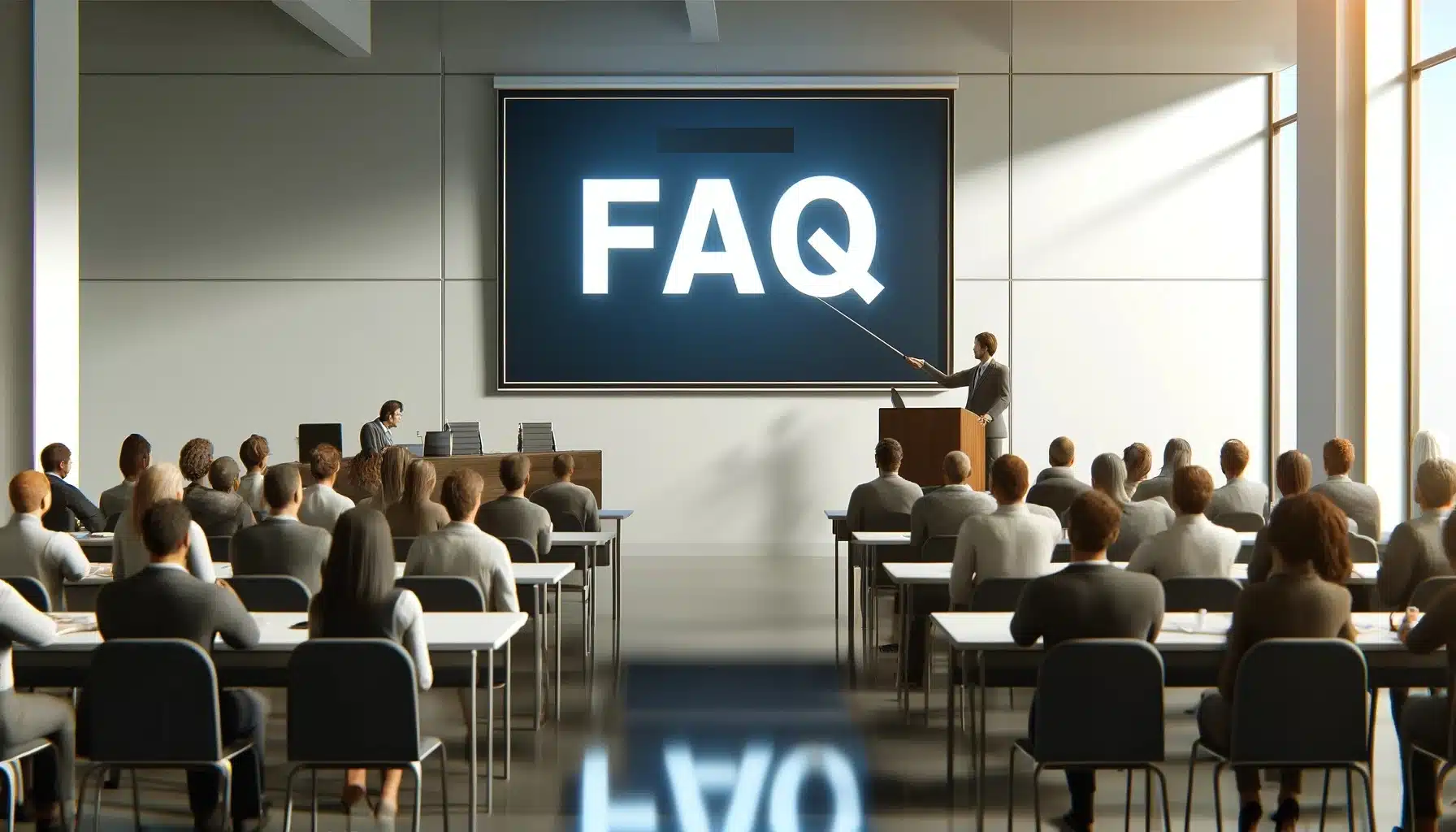
Frequently Asked Questions
What is the best way to edit wildlife photos?
The greatest way to edit animals photos is to start with basic modifications like exposure and white balance to ensure the image looks natural. Then, focus on enhancing details such as sharpening the subject and adjusting colors to make them pop. It’s important to maintain the integrity of the original scene while enhancing its visual impact. Finally, consider cropping the image to improve composition and remove distractions. In short, to add that final touch of perfection, select the best shots, find the ideal editing tools, and enjoy the creative process with your free resources.
Should you edit wildlife photos?
Yes, it’s often beneficial to edit wildlife photos to enhance their visual appeal and correct any imperfections. It allows you to bring out the best in your photographs by adjusting exposure, contrast, colors, and sharpness. However, it’s important to exercise restraint and avoid over-editing, as maintaining the authenticity of the animals scene is crucial for ethical and aesthetic reasons.
How do you edit nature pictures?
Modifying nature pictures involves enhancing the beauty of natural landscapes while preserving their authenticity. Start by adjusting basic settings like exposure, and saturation to ensure the image looks balanced and vibrant. Then, fine-tune specific elements such as sharpening details, adjusting colors, and removing distractions. Pay attention to composition and consider cropping the image if necessary to improve its overall impact and visual storytelling.
How do I edit wildlife photos in Lightroom?
To edit wildlife photos in Lightroom, import your photographs into the software and begin by making basic modifications in the Develop module. Use tools like the Exposure and White Balance sliders to adjust overall tonality and color balance. Then, utilize the Detail panel to sharpen the subject and bring out fine details. Additionally, use the HSL panel to selectively adjust colors and make them more vibrant or natural. Finally, consider using the Crop option to refine composition and remove distractions, ensuring the focus remains on the wildlife subject. Checkout our Lightroom course.
Conclusion
Being a Nature lover and photographer, I have always struggle with finding the right tools to make my snaps great. My journey in wildlife photography emendation, especially mastering aperture adaptations in Photoshop and Lightroom, has been rewarding. These features have enhanced my photos and my connection with nature.
Explore our Photoshop course and Lightroom course to start your transformative journey in wildlife photo emendation. Elevate your wildlife photography skills with our courses; they’re designed to help you capture and edit breathtaking photographs.
Have a nice photoshoot!


